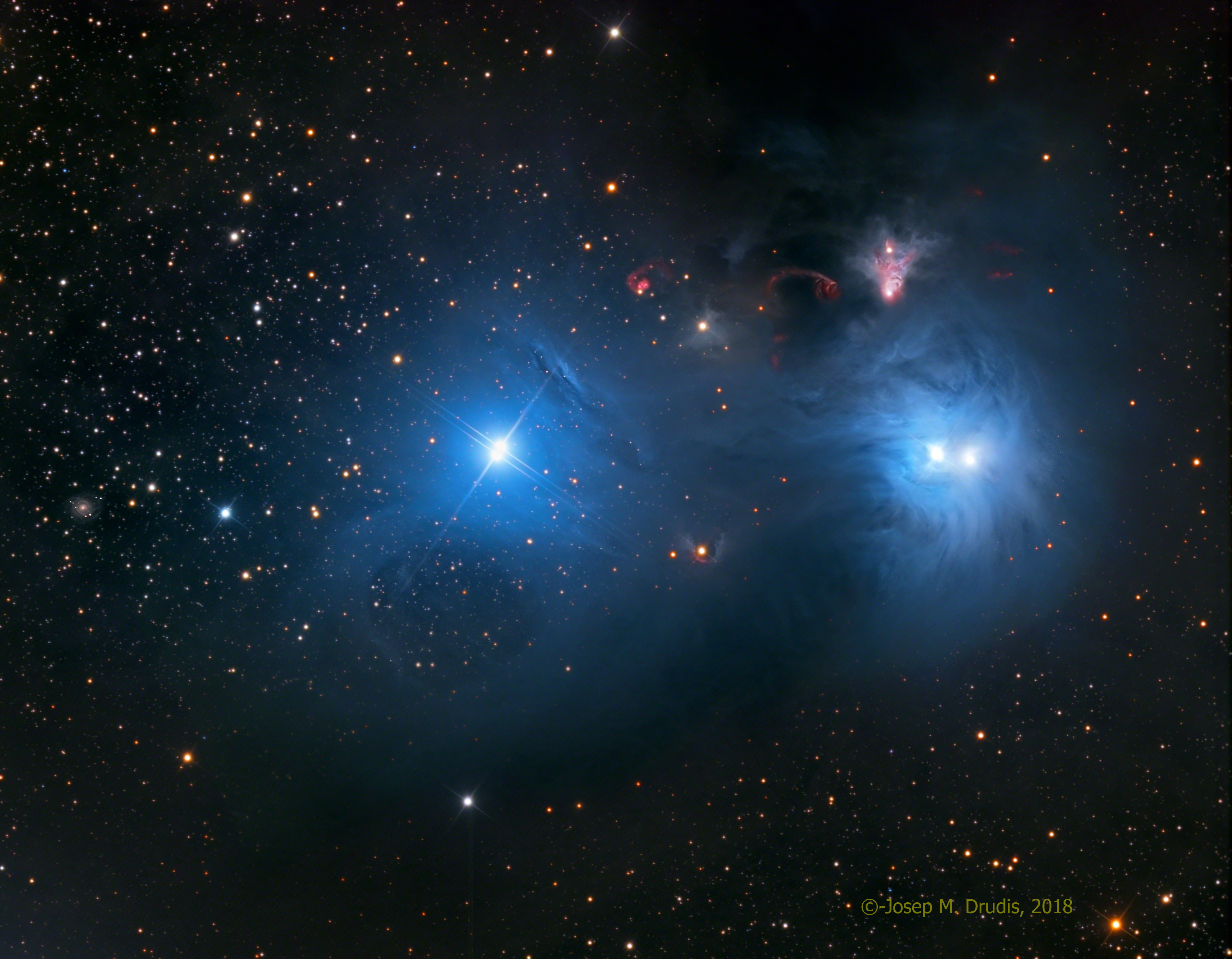
Click here for full resolution image
This image has been selected as APOD (Astronomy Picture Of The Day, NASA) on 09/20/2018.
This image has been displayed in the Hugo Giovannetti’s Facebook page “Space Learner” on September 23rd, 2018.
This is one of the most beautiful regions in the sky. It is also an interesting one, with different kinds of objects in it. It is due to the four very bright and blue stars, that we can see that there is dust in this region. Their light, reflected by the surrounding dust is dispersed and therefore color shifted to bluer shades. This makes this nebular complex aesthetically very attractive. But this image shows more than that.
The blue nebular complex consists of four catalogued objects: NGC 6726 (the left half of the reflection nebula on the right -Northwest-), NGC 6727 (the right half of the reflection nebula on the right), NGC 6729 (the upper portion of the nebula on the right) and IC 4812, the reflection nebula located on the left side of the picture (see annotated image below).

Additionally, being this region a starbirth site, we can see several Herbig Haro objects (up to thirteen in this image). The list would be (from left to right): HH101N, HH82, HH96, HH97 (not annotated here, because it lies just below HH96’s letters), HH101, HH731A, HH731B, HH100, HH98, HH104, HH735, HH99 and HH735A. Most of these HH objects are usually not (or just barely) seen in LRGB images. This image was taken also in LRGB, as well as with 8 hours with Halpha filter, in order to show them better.
Additionally, the cherry on top of the cake, the image also shows a distant (and beautiful) face-on galaxy, 2MASX J19002351-3712243. This 15.1 magnitude galaxy lies 355 Million light years away and it is far enough to show a (low, but measurable) redshift of 0.02565. It is located on the far left of the image center.
Additional Information
Object
Name(s): NGC 6726, NGC 6727 and more…
Type: Reflection Nebula and HH objects
RA: 19h 01m 41s
Dec: -36º 51’ 56”
Constellation: Corona Australis
Size (arcmin): 20×10
Magnitude: +12
Distance: 450 ly
Image
Date: 2018-06-23 thru 2018-07-15
Location: iTelescope.net, SSO near Coonabarabran, NSW Australia
Size (arcmin): 35×27
Telescope: Planewave CDK 20” f/6.8
Camera: SBIG STX16803 (4096x4096pix)
Guiding: Astrodon MonsterMOAG off-axis guider
Total exposure: 18.5 hours (Ha: 8h; L: 3h45m; RGB: 6h45m)
Processing: CCDStack, Photoshop CC 2018
This is a stunning image. I’m curious as to how much of a difference the H-alpha exposures made in revealing the detail shown in this final result. I’m very familiar with the impact H-alpha data have on enhancing the detail in many nebulae, but I haven’t been aware of that band making a huge difference in the imagery of reflection nebula. So here, what was the impact of including that particular narrowband?
Actually, the impact of using H-alpha was huge. Reflection nebulae are always in a place where stars are being born. We usually associate star birth regions to red, H-alpha emitting, gas clouds, but reflection nebulae are made apparent by young blue stars in places where other stars are forming. Once said that, the Herbig Haro objects can be somewhat hidden from sight (meaning: broadband filter imaging) by the dust and gas in this area. The H-alpha filters digs a bit deeper by not capturing the blue reflection and the offered contrast is better. I had not seen any image of this nebula that would show all 13 HHs. My intention was to try to capture all of them. The H-alpha allowed this and enhanced the HHs in the image. In some images of reflection nebulae, I also take H-alpha images, you never know what can pop up there, as just a few people do this. An example of what I say, is the discovery of an H-alpha emitting bubble inside a reflection nebula that was published in the Research Notes of the AAS (https://astrodrudis.com/ngc-6595-ngc-6589-and-ic-1284/ and the link to the publication herein). Another example would be https://astrodrudis.com/ic-2220-and-annas-nebula/ and the link to the publication herein.